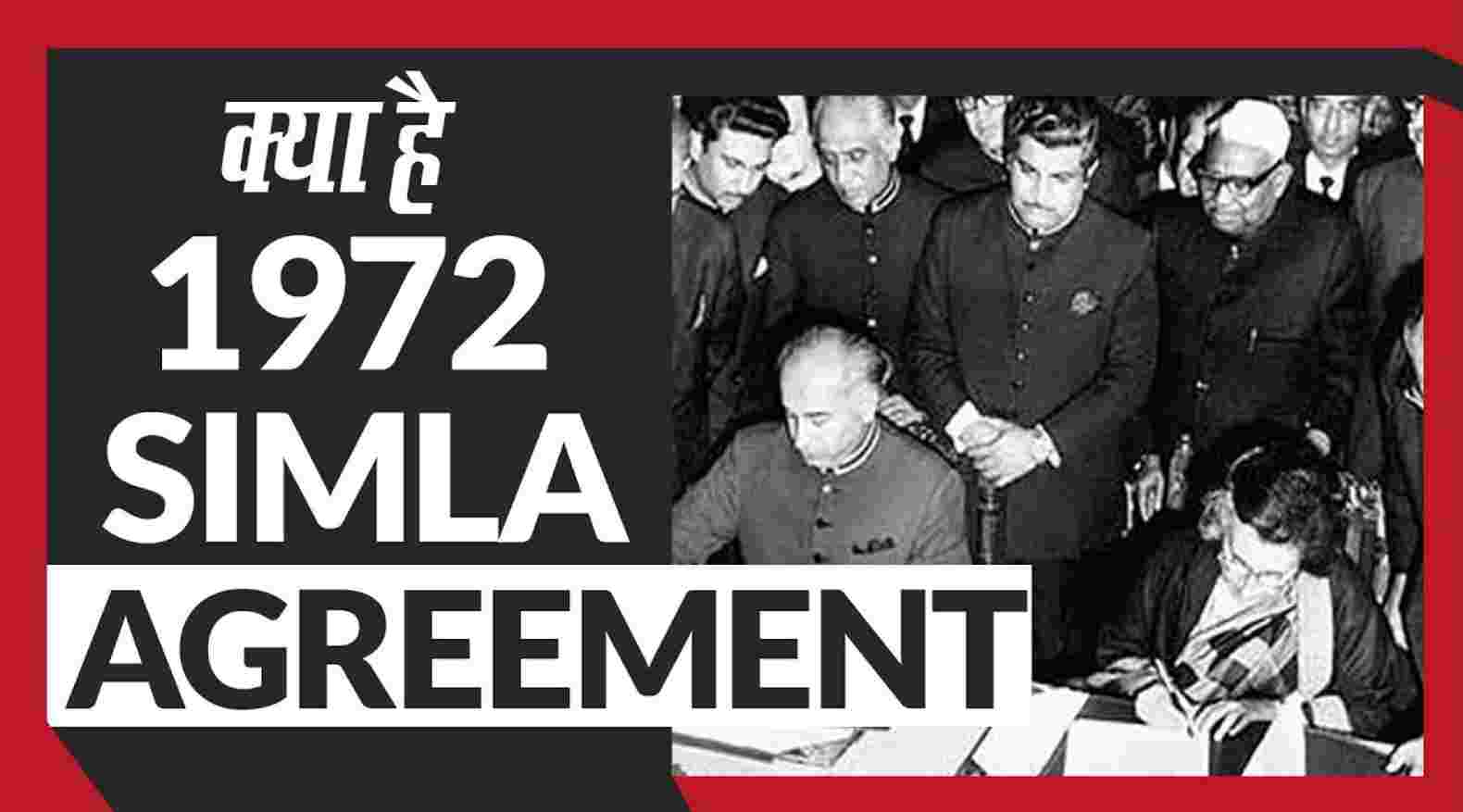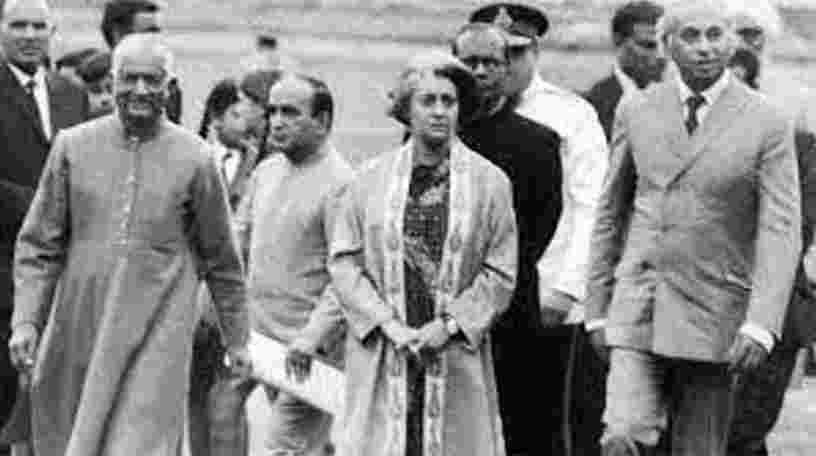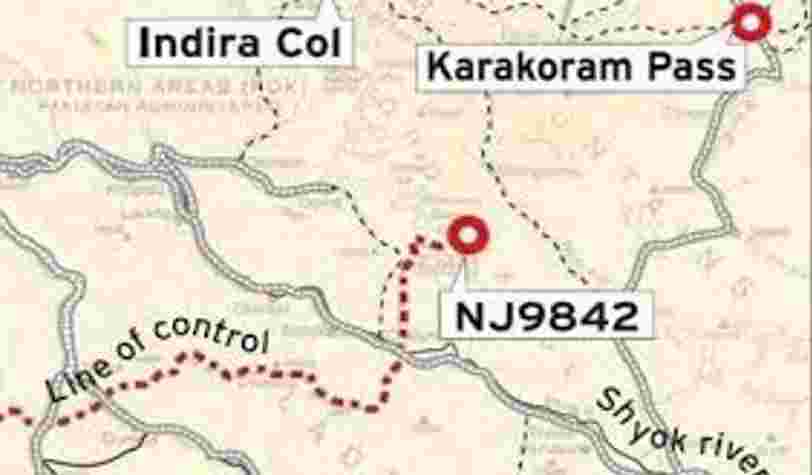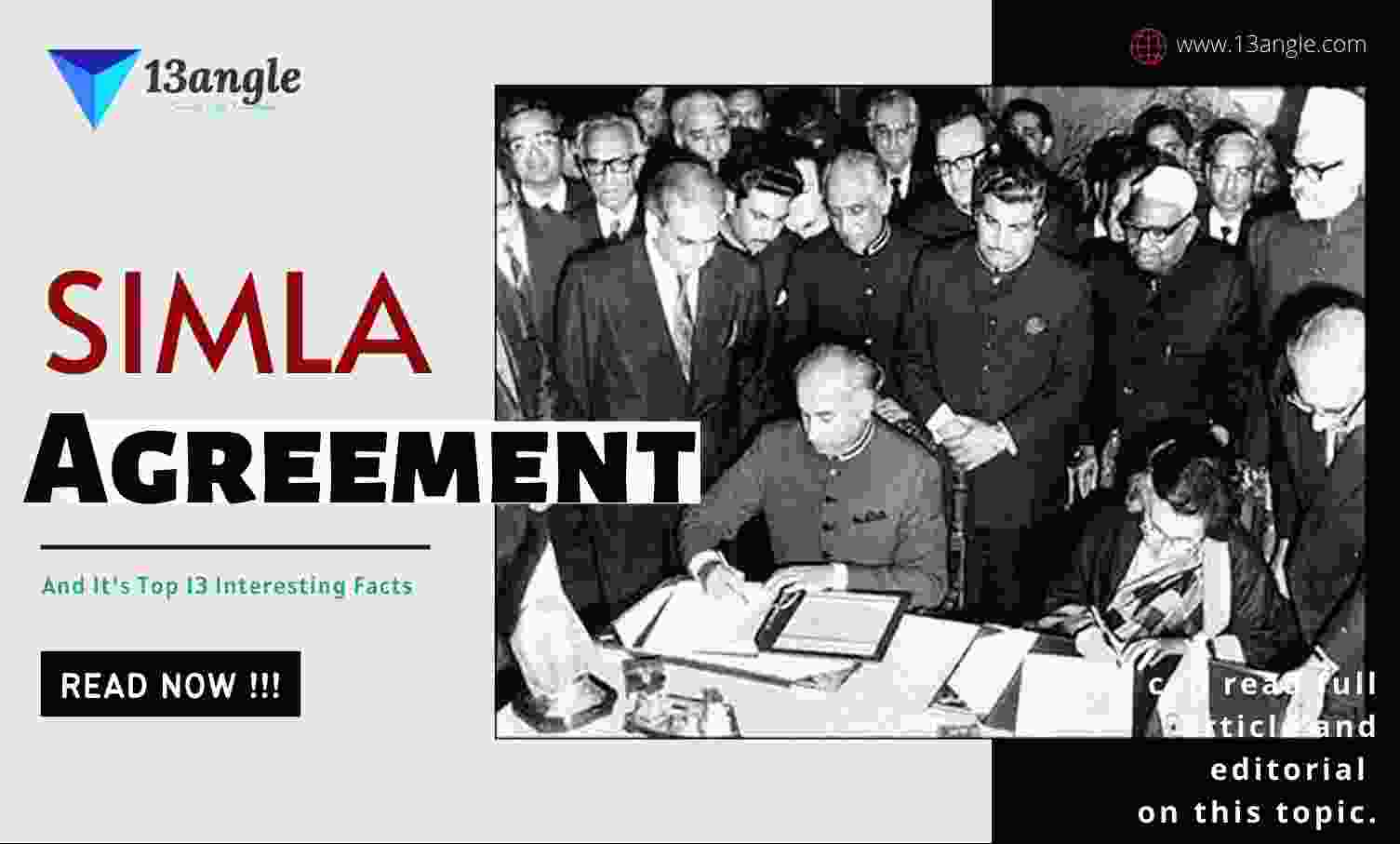- Umang Sagar
- Agreement, Recent article
Shimla Agreement (1972)

Introduction
The Shimla Agreement is a recognized peace treaty signed on July 2, 1972, following the India-Pakistan war of 1971, which began when India entered in East Pakistan as an ally of Bengali insurgents fighting against Pakistani state troops in the Bangladesh Liberation War. It was a formal agreement to end both countries’ hostile state of war in order to foster friendly relations. Its goal, like every previous accord, was to end hostilities. It was signed six months after the war by then-Indian Prime Minister Indira Gandhi and then-Pakistan President Zulfikar Ali Bhutto. The pact was signed with the belief that both countries would coexist peacefully. It was regarded as an effective framework for maintaining peace between the two countries.
The Simla Agreement is sometimes known as the Shimla Deal. The Indian participation was critical in the conflict, causing East Pakistan to secede from its union with West Pakistan and the birth of the independent state of Bangladesh.
The treaty’s official purpose was stated to be to “put an end to the conflict and confrontation that had previously marred their relations” and to “conceive the steps to be taken for further normalization of India–Pakistan relations while also laying down the principles that should govern their future interactions.”
Details Of Shimla Agreement

- The pact was signed at Shimla, India, between Pakistan’s President Zulfiqar Ali Bhutto and India’s Prime Minister Indira Gandhi. The accord also prepared the path for Pakistan to recognize Bangladesh diplomatically. Technically, the document was signed on July 3, 1972; nevertheless, official records are dated July 2, 1972. The following are some of the significant outcomes of the Shimla Agreement:
Both countries intend to “resolve their disagreements peacefully through bilateral dialogue.” India has repeatedly said that the Kashmir conflict is a bilateral problem that must be resolved via bilateral discussions in accordance with the Simla Agreement of 1972, and so has refused any third-party interference, including that of the United Nations.
The cease-fire line of 17 December 1971 was changed into the Line of Control (LOC) between India and Pakistan, and it was agreed that “neither party should seek to alter it unilaterally, regardless of mutual disputes and legal interpretations.” Many Indian bureaucrats later claimed that a tacit agreement was struck at a one-on-one meeting between the two chiefs of government to transform this LOC into an international boundary.
- Pakistani bureaucracy, on the other hand, has disputed any such claim. India has contended that the delineation of a new “cease-fire line” by both governments renders the United Nations Military Observer Group in India and Pakistan meaningless. The goal of UNMOGIP, according to India, was to monitor the cease-fire line designated in the Karachi agreement of 1949, which no longer exists. However, Pakistan has a different perspective on the matter, and both nations continue to host the UN mission.
Context Of The Shimla Convention

- The India–Pakistan war of 1971 was the catalyst for the signing of the Shimla agreement in 1972, which was more than simply a peace treaty. The accord was an attempt to mitigate the negative consequences of the conflict. It pretty much ruined the ties between India and Pakistan to the point where they are now beyond repair. Pakistan suffered a devastating defeat in the India Pakistan war of 1971, which resulted in Bangladesh emerging as an independent nation and East Pakistan breaking apart from the rest of Pakistan. The ethnic cleansing of Bengalis in East Pakistan by Pakistani forces led directly to the outbreak of war in that region. India provided aid to those who had been displaced as a result of the genocide. India also attempted to block Pakistan’s entry into India during the process of freeing Dhaka.
Principles And Goals Of The Shimla Convention

Principles:-
- They committed to a direct bilateral approach to amicably address disputes.
- Special emphasis was placed on people-to-people encounters, for which they had to establish cooperative relationships.
- Both nations were expected to refrain from violating the Line of Control in Jammu and Kashmir, which helps India and Pakistan maintain peace and is an important CBM.
Goals:-
- Stop the fighting and antagonism
- Encouragement of amicable and pleasant connections
- Establishing the state’s peace and prosperity
- Respect for one another’s political autonomy, sovereignty, integrity, and cohesion
- Not to interfere with one another’s internal matters
- Avoid using antagonistic propaganda.
A Synopsis Of Delhi Agreement

The Delhi Agreement was a trilateral agreement signed on August 28, 1973, by India, Pakistan, and Bangladesh, but only approved by India and Pakistan. After the Bangladesh Liberation War of 1971, it permitted the return of prisoners of war and imprisoned officials held in the three nations. The deal has been criticized for Pakistan’s reluctance to repatriate Urdu speakers from Bangladesh, for failing to hold accountable 195 high military personnel accused of misconduct during the war, and for failing to provide for a war crimes tribunal.
During the 1971 Bangladesh War, the Pakistani government detained hundreds of Bengali officials and military personnel together with their families in West Pakistan. Many members of the Urdu-speaking population in Bangladesh desired to go to Pakistan. After the Surrender of Pakistan on 16 December 1971, India kept many thousand Pakistani prisoners of war, including 195 military commanders jailed for misconduct.
President Zulfikar Ali Bhutto vowed to prosecute detained Bengali officials if Bangladesh moved forward with preparations to punish purported Pakistani war crimes.
Connection Between The Shimla And Delhi Conventions
- The Delhi Agreement was followed in 1973 by the Shimla Agreement. It was a trilateral agreement between India, Pakistan, and Bangladesh. The major objective of the Agreement was the repatriation of war prisoners and civilians held in the three nations following the Bangladesh Liberation War. Only India and Pakistan ratified the agreement, despite all three nations signing it. Bengali officials and military men detained in West Pakistan were explicitly ordered to be relocated to Bangladesh. India promised to move 6,500 war prisoners and military personnel, while Bangladesh committed to relocating mostly Pakistan’s Urdu-speaking Community. Due to Pakistan’s failure to adequately resettle the people in Pakistan after the Agreement, some war captives were left destitute and abandoned.
Conclusion

- The Shimla Agreement teaches a lot about the significance of bilateral agreements, which appear to be the solution for the wars that have been going on between countries that are at war with one another for the longest period. The Shimla Agreement is an excellent illustration of a bilateral agreement in the context of the international community; however, it is a non-viable agreement due to the fact that it was unable to fully accomplish any of India’s goals, including the upkeep of peace and the resolution of the Kashmir issues. It is possible that this event is what prompted the Pakistani military to make their claim to Kashmir after they were defeated in Bangladesh.
Top 13 Facts About The Shimla Agreement
The convention was a shared dedication to working together to find peaceful solutions to any and all problems through direct bilateral techniques.
To establish the groundwork for a cooperative partnership, with a primary emphasis on personal connections between those involved.
Maintaining the inviolability of the Line of Control in Jammu and Kashmir is essential to achieving lasting peace between India and Pakistan and is a condition that must be met before peace can be achieved.
The Agreement was criticised for having ridiculously high expectations of Pakistan, especially given that Bhutto was notorious for breaking his promises.
In 1999, there was a serious conflict that resembled war going on between both nations in the Kargil region. In Jammu and Kashmir, Pakistani forces have invaded Kargil and have also moved into positions along the Line of Control.
Their ties have been strained over the past 25 years due to issues and grounds for tensions that have arisen between the two countries. These kinds of disputes need to be resolved amicably.
Each nation’s national unity, geographical integrity, political independence, and sovereign equality need to be honoured and respected on an equal footing, and there has to be acknowledgement and respect on both sides.
As a result of the ceasefire that took place on December 17, 1971, the Line of Control in Jammu and Kashmir was established after the countries involved agreed to honour it without any biases and remain on their respective sides.
Subject to the ratification of the agreement by both nations in accordance with the processes outlined in their respective constitutions, the agreement will enter into force as of the day that the Instrument of Ratification is exchanged.
That the fundamental problems and sources of contention that have plagued ties between the two nations for the past quarter of a century should be addressed via the employment of nonviolent measures.
This Agreement will be subject to ratification by both countries in accordance with the procedures that are outlined in their respective constitutions, and it will come into force on the date that the Instruments of Ratification are exchanged. Both countries will be required to follow the procedures outlined in their respective constitutions.
Both governments have committed to taking any and all measures within their power to stop hostile propaganda from being directed at one another. The transmission of information that would foster the growth of amicable ties between the two nations would be actively encouraged by both of those nations.
For reconciliation, good neighbourliness, and lasting peace to happen between them, both countries must agree to live together peacefully, respect each other’s territorial integrity and sovereignty, and stay out of each other’s business.

For deep details, you can read the full article. Click the link below :



